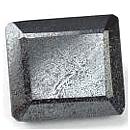|
Click on a letter above to view the list of gems. |
|
|
|
|
|
|
|
|
Limonite
(variety
of Goethite) |
|
| | |
| Discovered in 1806 (Goethite); IMA status: Limonite is Not Valid | ||
|
| ||
|
Chemistry |
| ||||||||||||||||||||
|
| |||||||||||||||||||||
|
FeO(OH) · nH20 | |||||||||||||||||||||
|
|
Hydrated Iron Oxide | ||||||||||||||||||||
|
Formula Notes: |
While a "generic" formula is often given as stated above, "Limonite" is really quite variable in composition - both in its levels of hydration and hydroxylation and in its cationic content. There really is no formual for it. | ||||||||||||||||||||
|
Molecular Weight: |
88.85 gm (Geothite) | ||||||||||||||||||||
|
Composition (Goethite): |
| ||||||||||||||||||||
|
|
|||||||||||||||||||||
|
|
|||||||||||||||||||||
|
|
|||||||||||||||||||||
|
|
|
Classification |
|
|
| |
|
Oxides | |
|
4/F.06-30 (Geothite) | |
|
4.FD.10 (Geothite) | |
|
|
4 : OXIDES (Hydroxides, V[5,6] vanadates, arsenites, antimonites, bismuthites, sulfites, selenites, tellurites, iodates) |
|
Related to: |
Diaspore Group (Goethite) |
|
Varieties: |
Adlerstein, Alumolimonite, Auriferous Limonite, Avasite, Bean Ore, Chromiferous Limonite, Liminitogelite, Limnite, Stilpnosiderite |
|
Synonyms: |
Bog Ore, Brown Hematite, Brown Ocher, Brown Umber, Eisenoxyd-Hydrat, Ferrite (of Vogelsang), Ferrohydrite, Ferrum limosum, Gel-Goethite, Hydroferrite, Hydrosiderite, Hyposiderite, Marsh Ore, Meadow Ore, Morasterz, Ortstein, Pecheisenstein, Perlimonite, Raseneisenstein, Seeerz, Sumpfertz, Umber, Xanthosiderite (of Schmid), Yellow Ochre |
|
|
|
|
Crystal Data |
|
|
|
|
|
Orthorhombic - Dipyramidal (Goethite) |
|
|
While "limonite" is amorphous, a number of minerals are noted for decomposing to it without losing their crystal shape - particularly pyrite crystals. Any "crystals" of "limonite" are actually pseudomorphs of other minerals which have decomposed in this fashion. Limonite is typically massive and may be very soft. |
|
|
None |
|
|
|
|
|
Physical Properties |
|
|
|
|
|
None |
|
|
Irregular/Uneven |
|
|
Brittle |
|
|
4.0 - 5.5 |
|
|
2.70 - 4.30 (g/cm3) |
|
|
None |
|
|
Not Radioactive |
|
|
|
|
|
Optical Properties |
|
|
|
|
|
Light Brown to Brown, may be Yellowish-Brown |
|
|
Opaque |
|
|
Imperfect Adamantine Metallic to dull Earthy |
|
|
R1–R2: (400) 17.5–19.2, (420) 16.7–18.3, (440) 15.9–17.4, (460) 15.2–16.7, (480) 14.6–16.0, (500) 14.1–15.5, (520) 13.7–15.0, (540) 13.3–14.6, (560) 13.0–14.3, (580) 12.8–14.0, (600) 12.5–13.7, (620) 12.4–13.5, (640) 12.2–13.4, (660) 12.0–13.2, (680) 12.0–13.1, (700) 11.9–13.0 |
|
|
0.00 (Opaque) |
|
|
Extreme; r > v (Geothite) |
|
|
|
|
|
Occurances |
|
|
|
|
|
Geological Setting: |
A very common material in the oxidized zones of iron-bearing deposits, it is produced by the decomposition of many iron minerals, particularly Pyrite, with water being retained in varying amounts. |
|
Common Associations: |
Hematite, Lepidocrocite, Manganite, Pyrite, Pyrolusite, Siderite, many other iron and manganese-bearing species. |
|
Type Locality: |
n/a |
|
Year Discovered: |
1806 (Goethite) |
|
View mineral photos: | |
|
|
|
|
More Information |
|
|
|
|
|
| |
|
|
|
|
While Limonite is amorphous, a number of minerals are noted for decomposing to it without losing their crystal shape - particularly Pyrite crystals. Any "crystals" of "Limonite" are actually pseudomorphs of other minerals which have decomposed in this fashion. Limonite is typically massive and may be very soft. Limonite
is a very common material in the oxidized zones of iron-bearing deposits
and can be found at many locations worldwide. |
|
|
We
have not photographed our Limonite gems. Please
check back soon. |
